The other day I rode up to see the source of the Chicago River. The river has several branches and forks, and its natural source lies far to the north near the Wisconsin border, flowing through the Skokie Lagoons and the Botanical Garden. But it could be argued that the largest contributor to the flow in the river is the Northside Sewage Treatment plant that pumps out an average of 333 million gallons of treated water per day, coming from the entire north side of the city and several suburbs.
Recently the Alliance for the Great Lakes released a report urging the city to change the way it treats its wastewater. The treatment plant cleans the sewage from the wastewater but does little to cleanse the water of bacteria or viruses passing through the system. Most all other cities around the country use chlorination/dechlorination or UV treatment to disinfect wastewater before it is released into open water. But Chicago simply dumps the brew into the river. Some of you Chicago River boaters may have personal experience with these little beasties that can cause gastroenteritis, leptospirosis, salmonellosis, shigellosis, even cryptosporidiosis.
Farther downstream, the river gradually cleans itself up. Below Grand Ave, water seeping through the locks from Lake Michigan gives the river a boost of freshness, only to be lost when passing by the world's largest sewage treatment plant, in Stickney. Beyond there, the river is not recommended for swimming until you get downstream past Lockport.
What surprised me while watching the sewage treatment outflow was all the wildlife present there. In just 10 minutes I saw turtles, ducks, a kingfisher, cormorant, night heron, bittern, all in this little spot.
The fast-moving water entering the sluggish canal must be a magnet for fish. Just downstream of the sewage treatment plant outflow a group of fishermen & women cast their lines. And indeed, I did see a lot of fish jumping and splashing in the murky water.
Just above the scene, the Skokie Swift raced by periodically.
The train provides the best view into the workings of the plant, with its circular settling ponds and aeration beds. When it was built in 1927, it was the world's largest wastewater treatment plant, an honor now held by the plant in Stickney. For now, the only vista I could find was this one, from an asphalt knob near Mount Trashmore, looking across the river at the handsome brick towers of the compound.
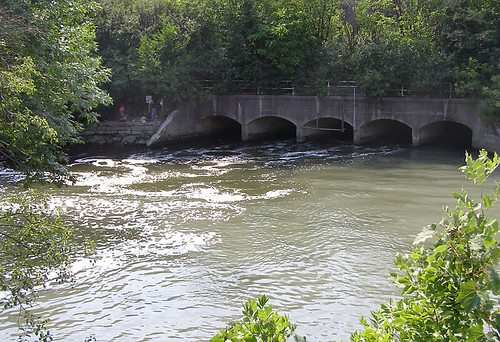
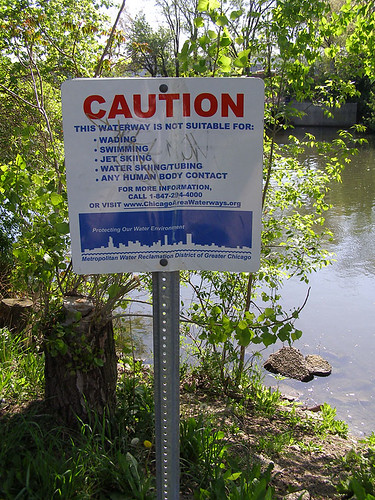
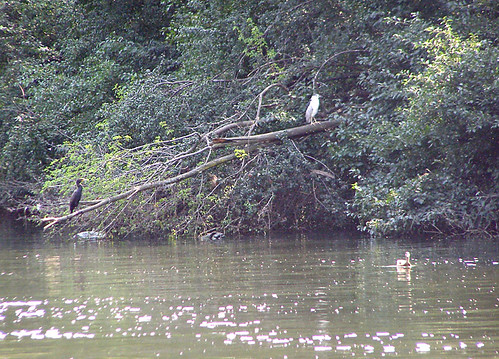
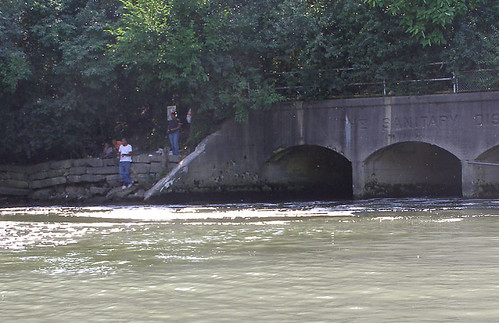
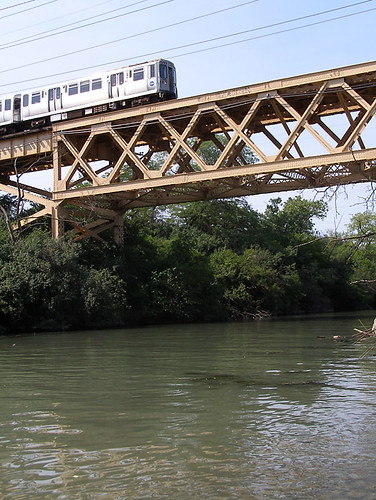
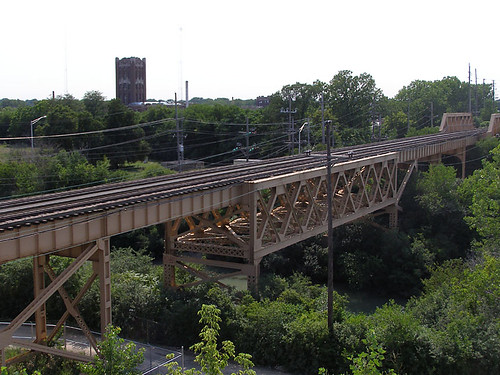
Comments (1)
This is incentive to peddle as fast as possible to Lockport!
Posted by Roy | August 17, 2007 1:01 PM
Posted on August 17, 2007 13:01